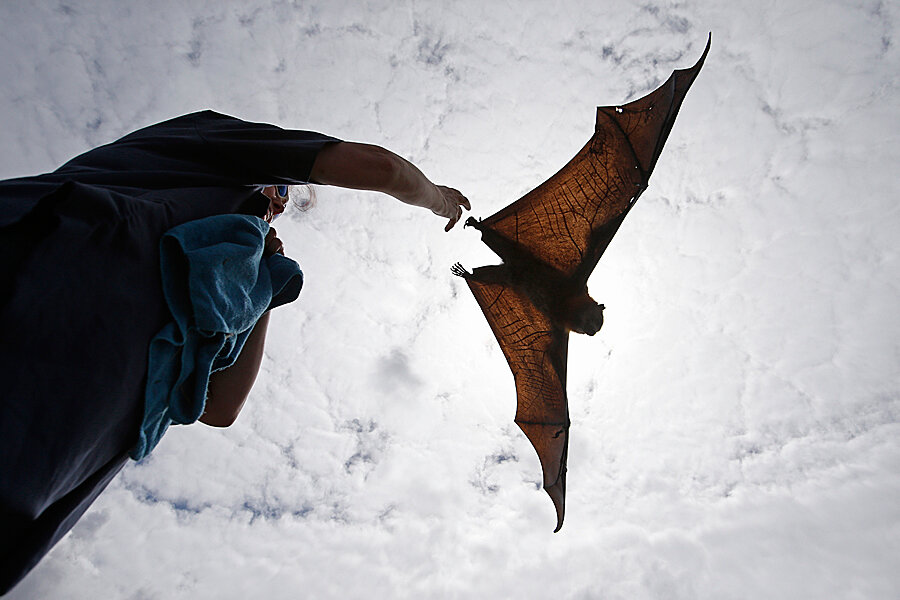Will an army of robotic bats soon fill the skies, blotting out the sun?
Loading...
The way bats rapidly flap their wings in flight could inspire new designs of flying robots, according to a new study.
Researchers studied how fruit bats use their wings to manipulate the air around them. Understanding how these processes work in nature could help engineers design small flying robots, known as "micro air vehicles," with flapping wings, the scientists said.
"Bats have different wing shapes and sizes, depending on their evolutionary function," Danesh Tafti, a professor in the department of mechanical engineering and director of the High Performance Computational Fluid Thermal Science and Engineering Lab at Virginia Tech, said in a statement. "Typically, bats are very agile and can change their flight path very quickly — showing high maneuverability for midflight prey capture, so it's of interest to know how they do this." [The 6 Strangest Robots Ever Created]
Fruit bats, and more than 1,000 other species of bats, have wings made of flexible, "webbed" membranes that connect their fingers, the researchers said. Fruit bats typically weigh about an ounce (30 grams), and their fully extended wings can each measure roughly 6.7 inches (17 centimeters) in length, Tafti said.
To examine how these creatures flap their wings, the scientists collected measurements of live flying bats and used specially designed software to analyze the relationship between the animals' movements and the motion of airflow around their wings.
They found, surprisingly, that bats could change the movement of their wings in order to maximize the forces generated by the flapping. This means a bat can increase the area of its wing by as much as 30 percent to maximize favorable forces as it pushes downward. Conversely, a bat can decrease the area of its wing by a similar amount as it flaps upward, which helps minimize unfavorable forces pushing down and keeps the bat agile midflight.
"It distorts its wing shape and size continuously during flapping," Tafti said.
By mimicking these flapping motions, engineers could design more efficient flying robots, the researchers said.
"Next, we'd like to explore deconstructing the seemingly complex motion of the bat wing into simpler motions, which is necessary to make a bat-inspired flying robot," study co-author Kamal Viswanath, a research engineer at the Laboratories for Computational Physics and Fluid Dynamics at the U.S. Naval Research Lab in Washington, D.C., said in a statement.
The researchers also hope to examine how different wing motions, not just surface area, affect the force produced by the flying bat.
"We'd also like to explore other bat wing motions, such as a bat in level flight or a bat trying to maneuver quickly to answer questions, including: What are the differences in wing motion, and how do they translate to air movement and forces that the bat generates?" Tafti said. "And finally, how can we use this knowledge to control the flight of an autonomous flying vehicle?"
The detailed findings were published online today (Feb. 18) in the journal Physics of Fluids.
Follow Denise Chow on Twitter @denisechow. Follow Live Science @livescience, Facebook & Google+. Original article on Live Science.
- Super-Intelligent Machines: 7 Robotic Futures
- Biomimicry: 7 Clever Technologies Inspired by Nature
- Ewwww! Photos of Bat-Eating Spiders
Copyright 2014 LiveScience, a TechMediaNetwork company. All rights reserved. This material may not be published, broadcast, rewritten or redistributed.





